Mulching Services Fort Worth
Mulching Services in Fort Worth
Mulching services deliver and install quality mulch throughout landscapes—refreshing existing beds, mulching new plantings, maintaining proper depth, suppressing weeds, retaining moisture, moderating soil temperature, providing finished attractive appearance. Fort Worth landscapes need regular mulching—existing mulch breaks down over time, annual or biannual refreshing maintaining proper depth, new plantings requiring immediate mulching, bare soil exposing to erosion and weeds, professional appearance demanding quality mulch. We provide mulching services throughout Fort Worth—residential properties in Tanglewood and Aledo needing annual refreshing, commercial sites near Alliance requiring regular scheduled maintenance, new installations in Walsh Ranch getting initial mulching, renovations in Fairmount and Monticello refreshing tired beds. Mulching quality affects landscape appearance and health—cheap dyed mulch fades and looks terrible within months, excessive depth smothers plants and causes rot, inadequate depth provides no benefits, improper application wastes money producing poor results. Professional mulching services use quality natural materials, proper depth throughout, pulled back from plant stems, clean attractive application, preparation removing old excess buildup, comprehensive approach maintaining landscape health and appearance.

Understanding Mulch Benefits and Functions

Moisture retention absolutely critical—mulch layer reducing evaporation dramatically, conserving water, reducing irrigation needs, particularly valuable Fort Worth summers. Fort Worth heat evaporates moisture fast—mulched beds staying moist much longer, unmulched soil drying within hours, mulch mandatory moisture management.
Temperature moderation protecting roots—mulch insulating soil from temperature extremes, moderating swings, protecting roots from intense summer heat and occasional winter freezes. Exposed clay baking in sun—surface temperatures extreme, mulch moderating, protecting shallow roots.
Weed suppression major benefit—mulch layer blocking light preventing weed germination, reducing weed problems dramatically, easier maintenance. Weeds explode in bare beds—mulch preventing most germination, occasional weeds easier pulling, massive maintenance reduction.
Erosion prevention during storms—mulch protecting soil from rain impact, preventing washing and erosion, critical during Fort Worth's intense storms. Clay erodes fast when exposed—2-3 inch rain events washing bare soil, mulch holding everything in place.
Soil improvement over time—organic mulch decomposing gradually, adding organic matter, improving clay structure slowly, long-term soil enhancement. Mulch breaking down—feeding soil biology, improving gradually, beneficial beyond just surface coverage.
Aesthetic enhancement significant—fresh mulch creating clean attractive appearance, defining beds, contrasting with plantings, instant curb appeal improvement. Fresh mulch transforms appearance—tired landscapes looking renewed, clean professional appearance immediately.
Mulch Types and Material Selection
Natural cedar mulch most popular—reddish-brown color, pleasant aroma, natural insect-repelling properties, decomposing moderately, attractive residential choice. We use cedar extensively—attractive color, pleasant smell, good performance, most requested material.
Hardwood mulch economical option—mixed hardwood species, darker brown color, decomposing reasonably, good performance, budget-friendly. We offer hardwood—economical choice, good appearance, adequate performance, appropriate budget-conscious selections.
Pine bark mulch options—pine bark nuggets or shredded, reddish-brown, various sizes available, good moisture retention, slower decomposition. We use pine bark—appropriate situations, various sizes, good performance particularly moisture retention.
Shredded versus nugget styles—shredded mulch staying in place better slopes, nuggets floating and washing more, texture differences, application-appropriate selection. We recommend shredded—slopes and most beds, nuggets for flat beds when preferred, proper selection for situations.
Native mulch using local materials—cedar and hardwood from Texas, supporting local, appropriate regional materials, environmentally responsible. We source locally—Texas materials when possible, supporting regional economy, appropriate native products.
Avoid dyed mulches—artificially colored red or black mulch, chemicals questionable, unnatural appearance, unnecessary treatment. We don't use dyed—preferring natural colors, avoiding chemical treatments, better quality natural products.
Compost as mulch option—fully decomposed compost, immediate soil improvement, less long-lasting coverage, appropriate certain applications. We use compost—specific situations, immediate soil benefit, understanding faster decomposition requiring more frequent reapplication.
Proper Mulch Depth and Application
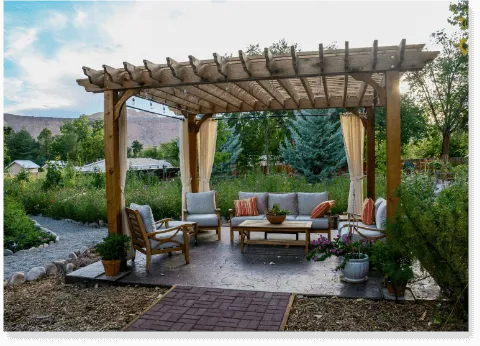
Correct depth 2-3 inches—adequate for benefits without excess, proper coverage for weed suppression and moisture retention, avoiding too thick or too thin. We apply proper depth—measuring, consistent throughout beds, not guessing creating variable coverage.
Avoiding excessive depth—mulch over 4 inches problematic, preventing water penetration, encouraging shallow roots, potential plant problems. Too much mulch is problem—we avoid excessive depth, proper measurement ensuring appropriate coverage.
Pulling back from plant stems—keeping mulch 2-3 inches away from trunks and stems, preventing moisture against bark causing rot, critical technique. We never volcano mulch—always pulled back from plants, proper clearance, preventing rot problems killing plants.
Feathering edges—tapering mulch depth at bed edges, attractive transition, natural appearance, professional finishing. We feather edges—gradual transition, attractive appearance, professional technique.
Even distribution throughout—consistent depth avoiding thin spots or piles, uniform coverage, attractive uniform appearance. We spread evenly—consistent coverage, avoiding bare spots or excessive piles, professional uniform application.
Under existing plants carefully—applying around shrubs and perennials without smothering, proper depth throughout beds including underneath, complete coverage. We mulch completely—reaching under plants without damage, complete bed coverage, thorough application.
Bed Preparation Before Mulching
Removing old mulch buildup—excessive layers accumulating over years, removing before adding fresh, preventing excessive depth, proper preparation. We remove buildup—identifying excessive accumulation, removing before refreshing, maintaining proper depths.
Pulling back old mulch from stems—correcting previous volcano mulching, exposing buried root flares, fixing common problems, proper preparation. We correct problems—identifying buried plants, pulling back, fixing improper previous work.
Weeding before mulching—removing existing weeds, starting clean, mulch over weeds not effective, proper weed management. We weed first—clearing beds, starting clean, mulch over clean beds preventing future weeds.
Edging bed borders—redefining edges, clean definition between beds and turf, proper edge cutting, attractive defined boundaries. We edge properly—clean cuts, defined borders, professional appearance, maintaining definition.
Cultivating and loosening—light cultivation if severely compacted, loosening top inch or two, improving before mulching. We cultivate when needed—breaking crusted clay, loosening surface, proper preparation.
Adding soil if needed—topdressing with quality soil if beds low or eroded, building up before mulching, proper grade restoration. We add soil—when beds significantly low, proper soil addition, correct grade before mulching.
Edge Definition and Finishing
Bed edge types—natural curves, straight lines, various styles, creating clean definition, attractive borders. We create edges—appropriate styles for properties, clean attractive definition, professional borders.
Edge cutting techniques—manual or mechanical edging, proper depth 3-4 inches, clean vertical cuts, maintaining definition. We edge properly—adequate depth, clean cuts, attractive definition lasting.
Maintaining versus redefining—annual touch-up maintaining edges, occasional redefining when overgrown, appropriate maintenance. We maintain edges—annual refreshing, redefining when needed, appropriate ongoing care.
Edge materials options—metal or plastic edging, stone borders, natural dirt edges, various options for situations and preferences. We install edging—appropriate materials when desired, discussing options, various approaches.
Mulch volcanoes at edges—piling mulch high at borders, unattractive excessive depth, avoiding mounding, proper level application. We avoid edge mounding—level appropriate depth, avoiding piled borders, attractive proper application.
Clean lines between mulch and turf—defining clearly, preventing mulch spreading to grass, attractive crisp appearance, professional finishing. We maintain definition—clean lines, preventing mixing, attractive professional separation.
Application Techniques and Methods
Wheelbarrow and manual spreading—traditional method, good for most beds, controlled placement, appropriate residential applications. We spread manually—controlled careful application, quality placement, appropriate most situations.
Mulch blower for large areas—pneumatic blowing, efficient large commercial applications, faster coverage, appropriate scope. We use blowers—large commercial projects, efficient coverage, appropriate equipment for scale.
Working around existing plants—spreading carefully without damaging, reaching under plants, complete coverage without harm. We work carefully—protecting plants, complete coverage, gentle technique preventing damage.
Slopes requiring special attention—mulch washing on steep slopes, heavier materials or erosion control, proper management. We handle slopes—appropriate materials, erosion control when needed, preventing washing.
Avoiding contamination—keeping mulch out of lawn areas, preventing mixing with turf, clean application, protecting adjacent areas. We protect surroundings—keeping mulch contained, preventing spreading to grass, clean careful work.
Cleanup after application—removing excess from hardscape and turf, sweeping walks, blowing patios, clean finished appearance. We clean thoroughly—removing all debris and excess, sweeping and blowing, professional finished appearance.
Mulching Frequency and Timing
Annual mulching typical—refreshing mulch yearly, maintaining depth and appearance, standard maintenance schedule. We recommend annual—spring typically, maintaining benefits, standard maintenance practice.
Spring mulching most common—March-April typical timing, preparing for growing season, fresh appearance for spring and summer. We mulch spring—most common timing, preparing beds for season, attractive fresh appearance.
Fall mulching alternative—preparing for winter, fresh appearance cool season, appropriate timing option. We mulch fall—acceptable timing, benefits through winter, preparing for cool season.
Mulch lasting 1-2 years typically—decomposition rate depending on material, cedar lasting longer than hardwood, natural breakdown over time. Cedar lasts longer—18-24 months adequate coverage, hardwood 12-18 months, natural decomposition rates.
Topping off versus complete replacement—adding layer annually versus removing and replacing, appropriate approach depending on buildup. We assess appropriately—topping when acceptable, removing buildup when excessive, proper approach for conditions.
Signs needing fresh mulch—thin coverage, faded color, significant decomposition, weeds increasing, decreased appearance. We recognize signs—recommending refresh when needed, appropriate timing based on conditions.
Avoiding Common Mulching Mistakes
Volcano mulching absolutely avoid—piling mulch against tree trunks and stems, extremely common and deadly mistake, moisture causing rot, killing plants. We never volcano—always proper clearance, educating about dangers, preventing common fatal mistake seen everywhere.
Mulch too deep suffocating—excessive depth preventing water and air penetration, roots growing into mulch not soil, plant health problems. We apply proper depth—measuring, appropriate coverage, avoiding excessive depth problems.
Wrong mulch for application—using materials inappropriate for situations, cedar where not needed, inappropriate selections, proper matching. We select appropriately—right materials for situations, appropriate quality and type, proper selections.
Mulching over landscape fabric—fabric under mulch degrading, creating mess, preventing mulch soil contact, avoiding this practice. We don't use fabric with mulch—fabric alone or mulch alone, not combining creating problems.
Not pulling back from plants—leaving mulch against stems, moisture causing rot, common oversight, proper technique critical. We pull back always—proper clearance from all plants, preventing moisture-related rot.
Skipping bed preparation—applying over weeds or excessive buildup, inadequate preparation, poor results. We prepare properly—addressing issues first, starting right, quality results through proper preparation.
Using poor quality mulch—treating all mulch as equal, cheap dyed mulch or contaminated materials, quality matters. We use quality—natural untreated materials, reputable sources, proper products.
Special Mulching Situations
Tree ring mulching—mulching around individual trees in lawns, proper diameter extending beyond canopy drip line, adequate coverage protecting roots. We mulch tree rings—adequate diameter, proper depth, protecting roots from mower damage and competition.
Vegetable garden mulching—straw or compost appropriate, different materials for annual gardens, proper mulch for food production. We mulch gardens—appropriate materials, proper application, benefits for food production.
Slope mulching challenges—steep slopes requiring erosion control, heavier mulch or additional measures, preventing washing. We handle slopes—appropriate materials, erosion control when needed, preventing mulch loss.
New planting mulching—immediate mulch application for new installations, moisture retention and weed suppression from start, proper depth for establishment. We mulch new plantings—proper immediate coverage, supporting establishment, protecting from day one.
Rose bed mulching—specific depth and materials for roses, proper coverage without excess, rose-appropriate practices. We mulch roses—proper techniques, appropriate depth and materials, specialty application.
Native plant areas—mulch or not depending on design intent, naturalistic versus maintained appearance, appropriate for aesthetics. We discuss options—mulched versus natural, appropriate for design goals.
Commercial Mulching Services
Large-scale applications—commercial properties, apartments, HOAs, substantial square footage, efficient bulk application. We handle commercial—efficient methods, quality results at scale, appropriate commercial service.
Scheduled maintenance programs—annual contracts, automatic refresh schedules, consistent maintained appearance, convenient service. We offer programs—annual scheduling, consistent service, maintained professional appearance year-round.
Mulch blowing for efficiency—appropriate large commercial applications, faster coverage, cost-effective large areas. We use blowers—large commercial projects, efficient application, appropriate equipment.
Common area maintenance—HOA common spaces, apartment grounds, commercial campuses, maintaining shared landscape areas. We maintain commercial—consistent schedules, quality standards, professional maintained appearance.
Coordinating with other services—mulching as part of comprehensive maintenance, integrated landscape service, complete property care. We coordinate—comprehensive service programs, mulching integrated, complete landscape maintenance.
Bulk purchasing advantages—commercial volumes reducing costs, economies of scale, efficient materials procurement. We price competitively—volume discounts, efficient purchasing, reasonable commercial pricing.
Mulch Delivery and Materials
Bulk mulch delivery—loading directly from trucks, efficient large applications, cost-effective material delivery. We arrange delivery—bulk delivery when appropriate, efficient material handling, coordinated scheduling.
Bagged mulch for small areas—convenient small jobs, clean contained materials, appropriate limited applications. We use bags—small areas and touch-ups, convenient handling, appropriate scale.
Material calculation—square footage determining quantity needed, proper depth consideration, accurate material estimation. We calculate accurately—proper quantities ordered, avoiding excess or shortage, efficient materials management.
Quality material sourcing—reputable suppliers, consistent product, quality materials, reliable sources. We source quality—established suppliers, consistent products, proper materials always.
Fresh versus aged mulch—fresh mulch attractive color, aged mulch immediately available, discussing preferences and availability. We discuss options—fresh typically preferred, aged acceptable situations, explaining differences.
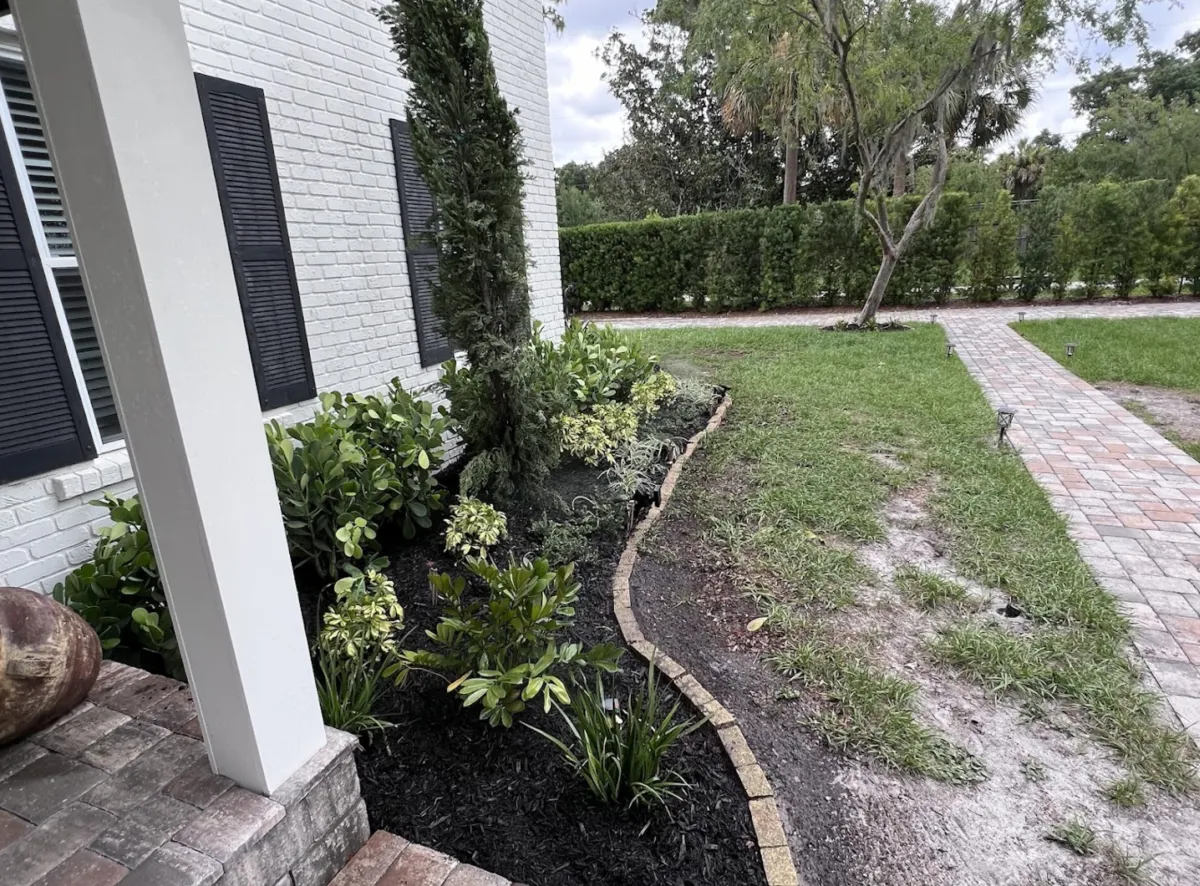

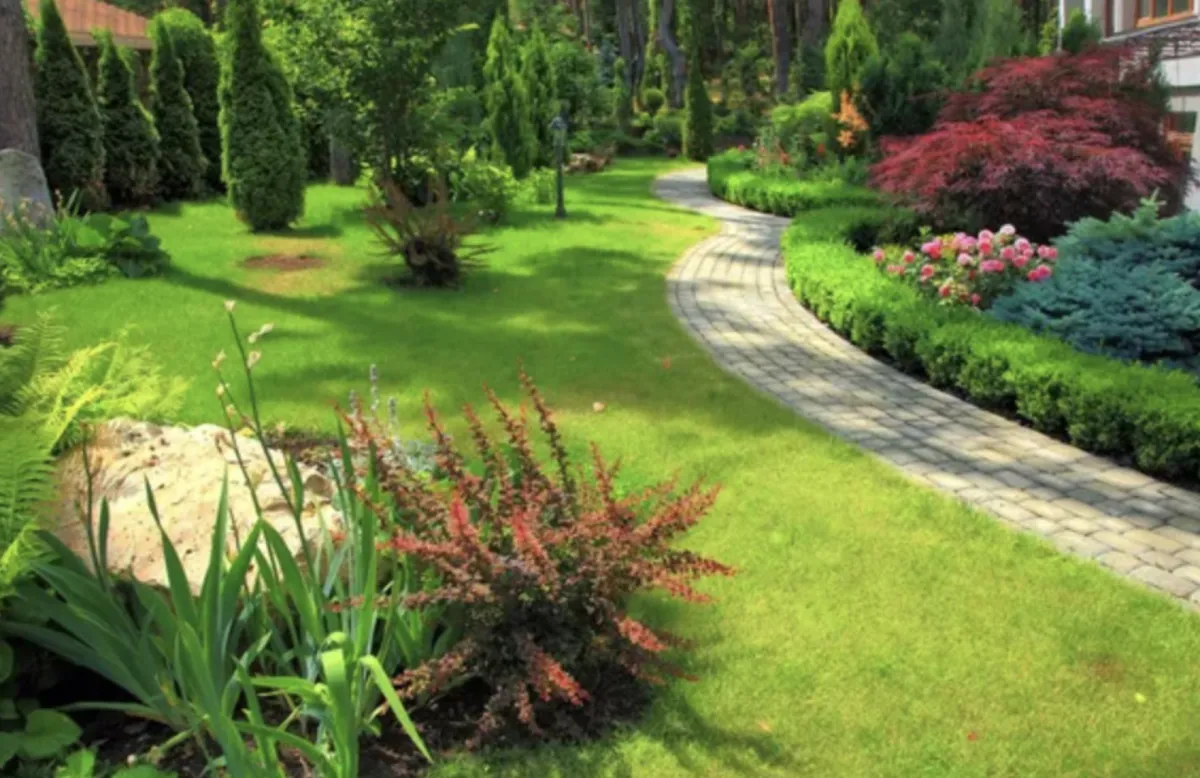
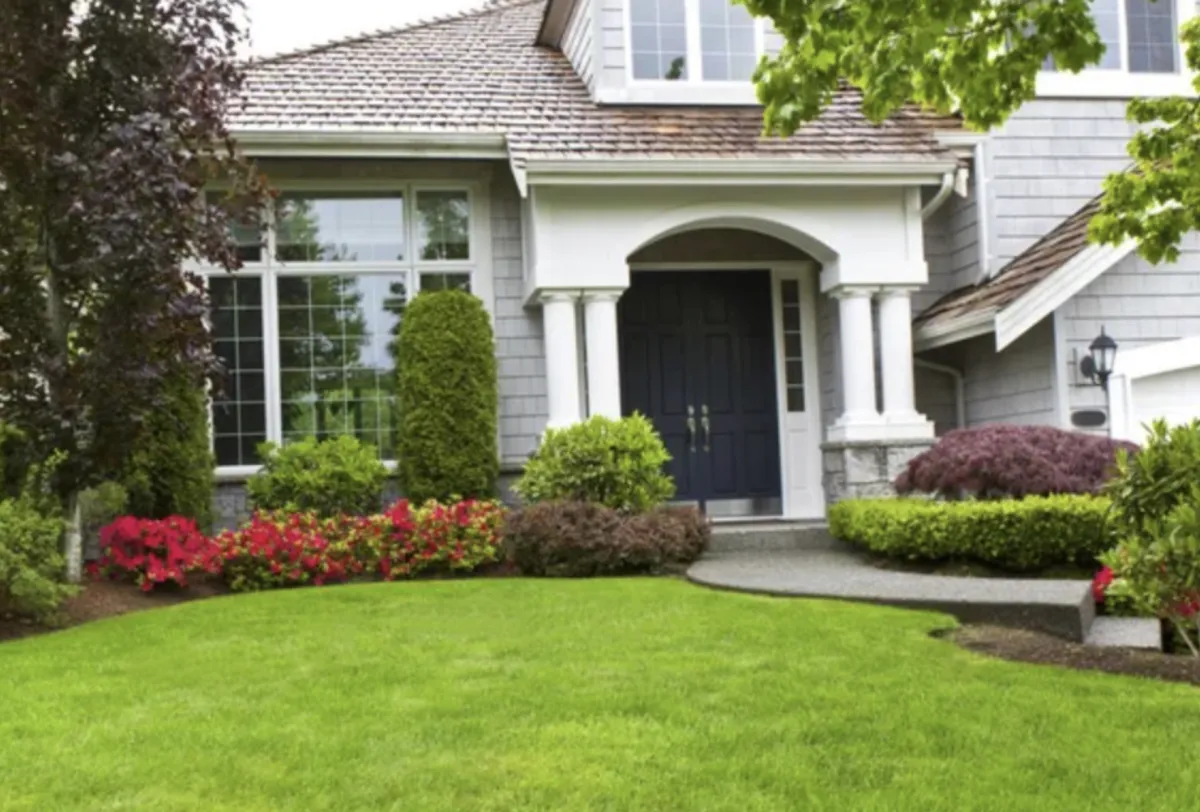
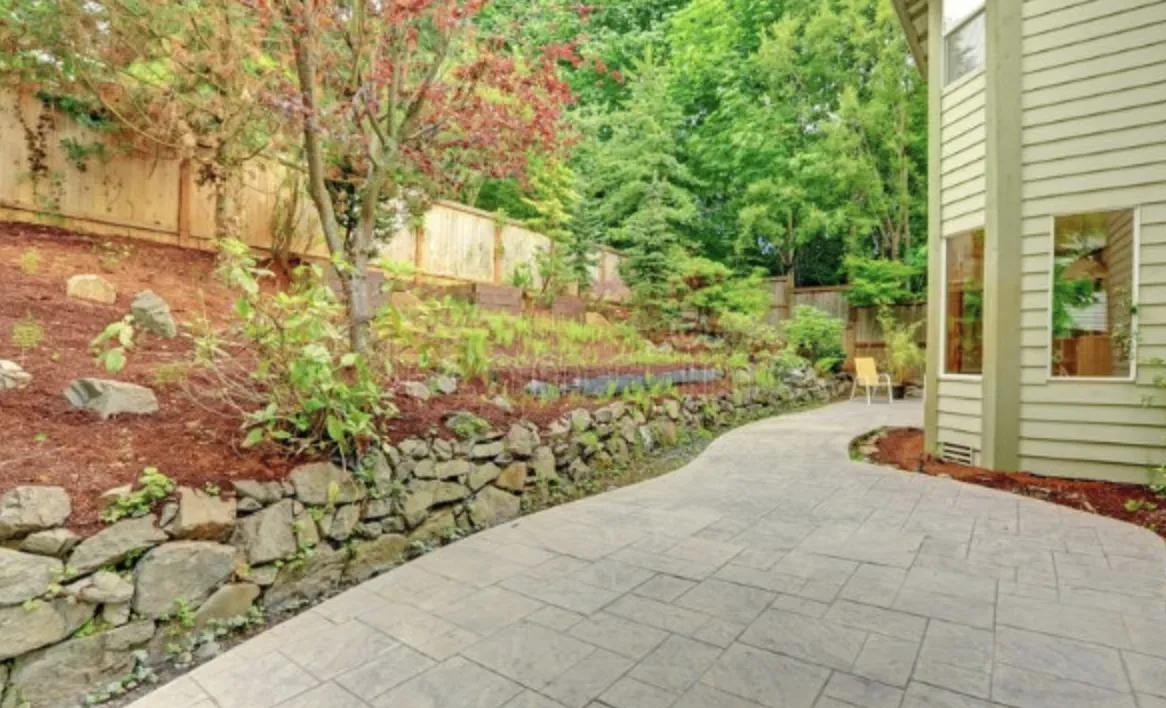

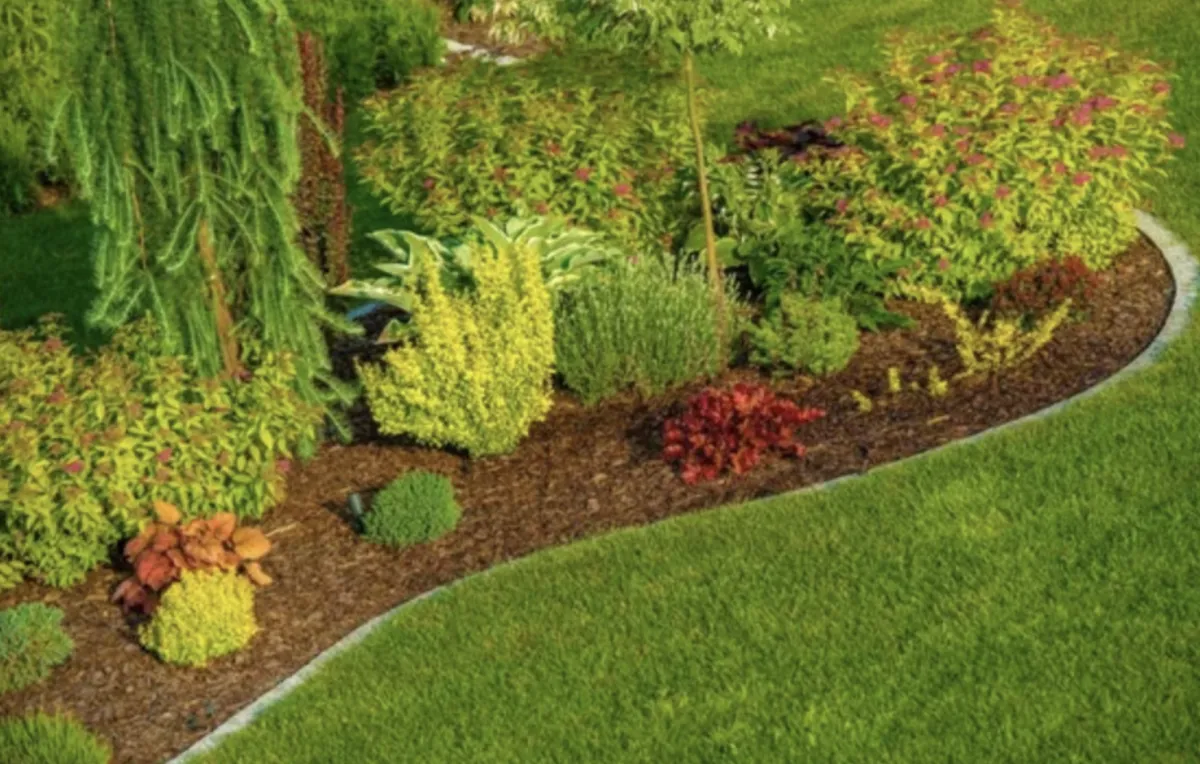

See What Our Customer Say About Us
Sarah M., Fort Worth, TX

“I can’t say enough good things about HF Landscape Design Fort Worth. They totally transformed our backyard into something out of a magazine — and they did it on time and within our budget. The team showed up early every day, cleaned up after themselves, and really listened to what we wanted. You can tell they actually care about the little details, not just getting the job done. Our neighbors keep stopping by asking who did the work — we tell everyone to call HF Landscape Design. Best decision we made for our home!”
Daniel R., Fort Worth, TX

“HF Landscape Design Fort Worth really blew us away. We had a plain front yard before, and now it looks like something you’d see in a design show. They helped pick the right plants for the Texas heat and even added lighting that makes the place glow at night. Super easy to talk to and very professional — they made the whole thing stress-free. We’d hire them again in a heartbeat.”
Megan & Tyler H., Fort Worth, TX

“Our backyard was just dirt and weeds before HF Landscape Design came in. Now it’s the spot where we spend every weekend with friends. They built a patio, added flower beds, and somehow made it all feel natural like it was always meant to be there. You can tell they love what they do — every detail was perfect. Highly recommend them to anyone in Fort Worth wanting a yard they’ll actually use.”
Get Professional Mulching Services
Stop dealing with dried out plants, excessive weeds, or poorly mulched beds. Get professional mulching services providing proper application and quality materials for Fort Worth conditions.
Call (817) 580-3329 to schedule mulching services. We'll refresh your landscape beds with properly applied mulch enhancing appearance and supporting plant health.
Service Areas: Fort Worth, Tanglewood, Ridglea Hills, River Crest, Westover Hills, Berkeley, Monticello, Mistletoe Heights, and surrounding communities.
Frequently Asked Questions
What is the average cost of landscape design?
Landscape design costs in Fort Worth typically range from $2,000 to $8,000 depending on property size—project complexity—level of detail required. Simple front yard designs for smaller properties might run $1,500 to $3,000. Comprehensive landscape plans for larger properties with detailed planting plans—hardscape designs—irrigation layouts—lighting plans usually cost $5,000 to $10,000 or more. We typically credit design fees toward installation if you proceed with us for the work. Design-only services cost more since we're not recouping fees through installation. Most clients in areas like Tanglewood or Westover Hills invest in detailed designs because their properties warrant professional planning. Newer neighborhoods with simpler yards might need less extensive design work.
What does it cost for a landscape design?
Design fees depend on project scope and what you need included. Basic conceptual designs showing general layout—plant groupings—hardscape locations run $1,500 to $3,000 for typical residential properties. Detailed construction-level plans with exact plant specifications—hardscape dimensions—grading plans—irrigation zone maps cost $4,000 to $8,000 or higher for complex projects. Commercial landscape design involves additional complexity and typically costs more. We discuss your specific needs during initial consultation and provide design fee quotes based on actual scope. Design fees get credited toward installation when you hire us for the work. Fort Worth properties with challenging conditions—significant slopes—drainage issues—often need more detailed planning which affects design costs.
What is the difference between a landscape architect and a landscape designer?
Landscape architects have formal education—state licensing—ability to stamp engineering drawings for permits. They handle complex projects requiring grading engineering—structural calculations—commercial site development—regulatory compliance. Landscape designers focus on plant selection—aesthetic layout—residential design without engineering components. In Fort Worth, landscape architects are required for certain commercial projects—retaining walls over specific heights—projects needing engineered drainage solutions. Residential projects usually work fine with landscape designers unless you've got significant slope issues—major grading needs—structures requiring engineering stamps. Landscape architects cost more but bring technical expertise for complex projects. Most residential landscapes in neighborhoods like Arlington Heights or Ridglea work well with landscape designers. Larger estates or properties with serious site challenges benefit from landscape architectural services.
Why is landscape design so expensive?
Professional landscape design involves considerable time—expertise—detailed planning work. Designers spend hours on site assessment—measuring—analyzing drainage and sun patterns—researching plant options for specific conditions. Creating scaled plans requires CAD software skills—design knowledge—understanding of Fort Worth's climate and soil conditions. Good designers prevent expensive installation mistakes—plant failures—drainage problems that cost far more to fix later. You're paying for years of experience knowing what works in North Texas clay soil—which plants survive July heat—how to design irrigation zones efficiently. Design fees also cover revisions—client meetings—coordination with contractors during installation. Cheap or free designs often mean cookie-cutter plans—inexperienced designers—or design costs hidden in inflated installation prices. Professional design upfront saves money long-term by getting things right the first time.
What is the rule of 3 in landscaping?
The rule of three suggests planting in odd-numbered groups—typically three plants—creates more natural and visually appealing arrangements than even numbers. Three plants or features create triangular compositions—visual interest—balance without formal symmetry. This applies to groupings of the same plant variety or repeating design elements throughout the landscape. In Fort Worth landscapes, you might see three crape myrtles anchoring a bed—three groupings of ornamental grasses—three boulders in a natural arrangement. The rule helps avoid the static look of paired plantings or single specimens. Works for plants of various sizes—repetition of colors—hardscape feature placement. Not a strict requirement but a helpful design principle creating more dynamic landscapes. We use the rule of three alongside other design principles—proper spacing—mature size consideration—Fort Worth-appropriate plant selection.
What is a realistic landscaping budget?
Realistic budgets for Fort Worth landscape projects typically start around $10,000 for basic front yard renovations and run $20,000 to $50,000 for complete front and backyard transformations with hardscaping. Simple refreshes—new plants—mulch—irrigation repairs might cost $5,000 to $8,000. Projects including patios—retaining walls—outdoor kitchens—extensive plantings easily reach $50,000 to $100,000 or more. Budget depends on property size—existing conditions—how much hardscape you want—plant material quality and maturity. Fort Worth's clay soil often requires additional drainage work affecting costs. Established neighborhoods like Monticello with mature landscapes might need less work than new construction in Walsh Ranch starting from dirt. Quality materials and experienced installation cost more upfront but last longer and perform better in our climate.
